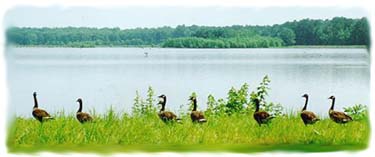
Selected Clips

Helen Pratt: Octogenarian birder turned ornithologist
By Wendee Holtcamp
Published in Animals Magazine, Sept/Oct 1998.
For thirty years, Pratt has voluntarily monitored the heron-egret rookery at Bolinas Lagoon Preserve on northern California's Point Reyes peninsula. Helen has become a self-trained scientist; a housewife and bird enthusiast turned expert on heron and egret nesting biology, published in scientific journals despite having no formal biology education.
Pratt is reserved and quiet in mannerism. She explains that her involvement began after her children were grown and gone, and she began attending the local Audubon Society Chapter meetings. The Chapter volunteers initiated study groups to learn about the local ecology so they would be qualified to lead naturalist field trips. One of the study groups involved observing the heronry at Bolinas Lagoon Preserve, a private nature reserve owned and operated by Audubon Canyon Ranch (not officially connected with the National Audubon Society).
The constant activity in the bird rookery piqued Pratt's interest. She began watching the birds, taking notes, and recording their numbers once a week throughout the nesting season. Using a high-powered telescope, she counted individuals and eggs within nests from across Picher Canyon, without disturbing the nesting birds.
The heronry consists mostly of great egrets, with a few snowy egrets and great blue herons. Because most herons and egrets nest far from human influence, and their nest sites typically change from year to year, the Bolinas Lagoon Preserve's temporally stable heronry offered a rare opportunity to learn things about these birds' that had never been documented.
Pratt quickly discovered that once a week wasn't enough to keep track of the changes in the heronry. "This was [late 1960s] when the DDT-induced eggshell thinning was occurring," Pratt explains, "You'd count three eggs one day and a couple days later, only one was left."
By the end of her first year, her forays up the steep Kent Trail to observe the heronry had evolved to three times weekly. She recorded numbers of nesting pairs, number of eggs laid, eggs hatched, and successful fledglings. She diagramed nest locations, took observations of courtship rituals and bird behavior, and noted how long the adults left for when they fed.
Over the course of years, she turned her notes and diagrams into publishable research, as she rapidly became an authority on these elusive nesters. Her findings have been published in the ornithological journals The Condor and The Auk and a self-published book called "Herons and Egrets of Audubon Canyon Ranch." When asked how she learned the scientific method with no formal training, she says, "It came naturally."
The Preserve itself remains pristine because it only opens to the public for a few months a year, mid-March through mid-July. The rest of the year they offer environmental education to schoolchildren from around the San Francisco and Point Reyes area. Though Pratt wasn't directly involved in the Preserve's education program, she feels that one of the best things they offer is busing inner-city school kids from San Francisco to the Preserve to teach them about the redwood forest and estuarine ecology. The kids just come alive.
Pratt says what kept her interest in the heronry over all the years was both her love of being outdoors and her scientific curiosity. She is quick to change conversation from herself to the birds. Sometimes the birds were quite entertaining. "The young fledglings would practice wing-flapping before they were actually ready to fly." she explains, "They will hold onto a branch with one leg while tentatively waving the other in the air, as if they wanted to go but weren't quite sure of themselves." With companions like this, it would be hard to get bored.
Those who work with Pratt vouch for her independence and strength of spirit. Ray Peterson, Preserve Biologist, says "Helen is a really terrific person, and very independent at 80 years old." He tells of a recent experience, "I went to see her a few days after serious surgery. She is tiny to begin with, and we expected to find this white-headed, frail Helen, resting on the couch, in a condition that would be a step above clinging to life. Instead, as we drove up to her house, we found her rolling the garbage can out for the next day's pickup!"
This past year, Helen retired from her heronry monitoring, but her impact and inspiration lives on. Her self-published book sells at the Preserve and elsewhere. Ranch docent Ray Paula continues the heronry monitoring that Pratt began.
-- Wendee Holtcamp is a freelance environmental journalist based in Texas. For more information on Audubon Canyon Ranch call 415-868-9244, email acr@egret.org, or go to their website: http://www.egret.org.
~**~**~**~**~
www.wendeeholtcamp.com
Copyright © 2005 Wendee Holtcamp